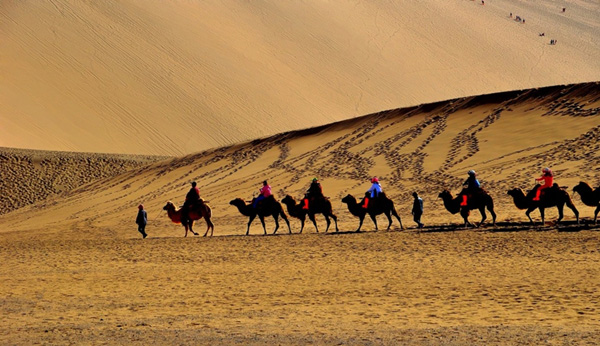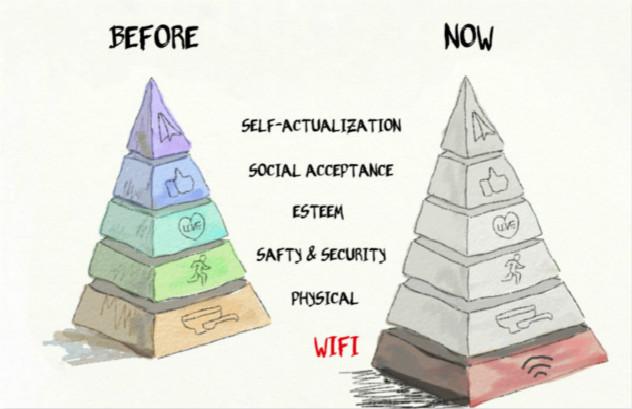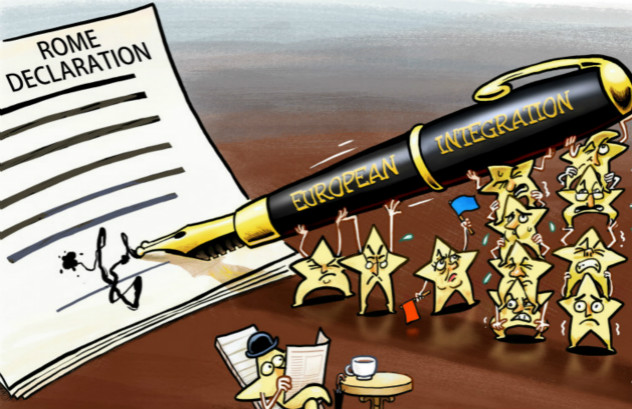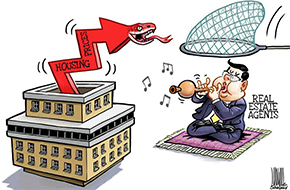Belt and Road plans to benefit world
 |
|
Tourists ride camels on the Mingsha Sand Dunes during a visit to Crescent Moon Spring on the outskirts of Dunhuang county of northwest China's Gansu province. [Photo/China Daily] |
China's leadership is vital for the success of the Belt and Road Initiative (the Silk Road Economic Belt and 21st Century Maritime Silk Road). It will not be easy, as it would take efforts to adjust its inward-looking history of thousands of years.
It's been three and half years since Chinese President Xi Jinping proposed the historic Belt and Road Initiative in Astana, capital of Kazakhstan. It's been only a short time but work has been on the right track to promote free trade and investment in order to benefit peoples in different countries and regions across the two ancient trade routes.
With the same target as the Belt and Road, the Eurasian Economic Union was formed in 2015 as a purely economic union, which currently includes five countries. The EAEU aims to break barriers of the five member states and further deepen economic cooperation within an integrated single market of 183 million people.
Kyrgyzstan, as one of the five members of the EAEU and a neighbor of China, would like to be a transit country to bridge the Belt and Road, the EAEU and the Europe Union and beyond.
For me, the Belt and Road Initiative is not just about infrastructure. It is actually a comprehensive framework which would use "soft power" to facilitate the communication among related countries and regions and their peoples in terms of economy, culture, science and art.
Just as the expectations of the leaders from China and Russia who are the pioneers of the Belt and Road Initiative and the EAEU respectively, the two initiatives should find the knowledge to integrate based on natural geographic peculiarities and complementary advantages. We need to meet each other more regularly to research how to harmonize the bilateral procedures already existing between China and members of the EAEU.
In May, Beijing will hold a high-level Belt and Road Forum for International Cooperation, and the participants and the leadership of China should outline more practical, executive and concrete projects and develop more discussions into projects with a straightforward breakdown of where, how and when things would happen.
The commitment of the Chinese leadership to the success of this initiative is persuasive and expectative. Things would move in the right direction with financial resources, knowledge and human resources.
Facing a bigger international arena, China needs to learn how to do things the right way given its long and rich but mainly inward-oriented history. It's high time for China to accept a leadership role of focusing efforts and attention.
The initiative as land linkage between China, Eurasia and Europe is not at all only about infrastructure but also about soft power to advance the understanding of different peoples and countries along the two ancient trade routes. It's not a traditional bilateral system but a truly regional, multinational, multilateral network and thus it needs to be designed precisely.
That's the exact reason think tanks like Emerging Markets Institute are needed to meet the knowledge requirements to support this comprehensive framework and the harmonization of the involved projects in all areas.
The author is a distinguished professor at Emerging Markets Institute at Beijing Normal University and at Schwarzman College at Tsinghua University and former prime minister of Kyrgyzstan.



















